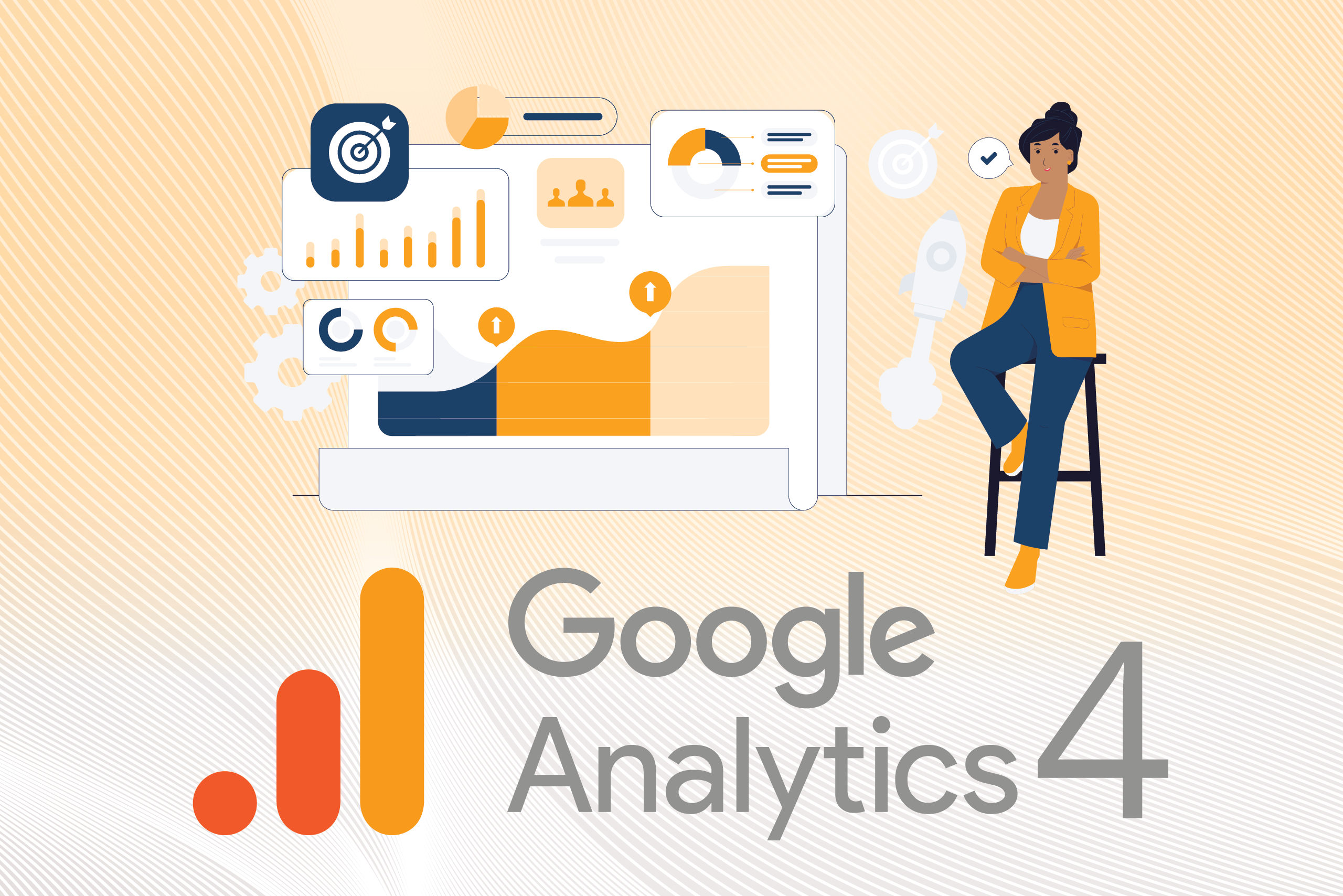Gain Invaluable Insights Into Your Audience With Google Analytics 4

By Evan Kennedy | July 17, 2024
Hearing buzz around the new Google Analytics? We’re breaking down how the comprehensive and granular controls for data collection and usage can help associations better understand their member’s digital journey.
What Is the New Google Analytics (GA4)?
At its core, Google Analytics 4 (GA4) helps you measure traffic and engagement across various platforms, including your website and apps. The insights gained from the platform help associations fine-tune their digital strategy and optimize marketing campaigns.
Before diving into the differences between GA4 and its predecessor Universal Analytics, I want to underscore the importance of ensuring a staff member isn’t using their personal Gmail address with the account setup. Why? Because in that instance, if they leave the association you lose access. So I suggest you create a Gmail account for the association that multiple staff members can access.
The Evolution From Universal Analytics (UA) to GA4
Compared to its predecessor, Universal Analytics (UA), GA4 introduces several key differences and advancements. GA4 is a complexly new program built from the ground up, not simply an update to UA. It’s the only Google platform recording data as of July 2023, so if you haven’t acted, you aren’t receiving this useful data and need to implement this update. GA4 leverages AI and machine learning to provide a better user experience and increased privacy controls.
1. Event-Driven Data Collection
GA4 shifts from session-based to event-driven data collection. This means every interaction on the website or app, such as clicks, video views, and file downloads, is treated as an event. For associations, this granularity offers deeper insights into member and visitor behavior. It allows you to understand which specific actions members take on your websites and how these actions correlate with key performance indicators. Simply visiting the page is a measurement of the past. Now, “events” measure what the user did during that visit, such as sign up for a newsletter or download a form. I encourage associations to set up custom events that are meaningful to your association’s goals and KPIs. Custom events allow you to track more complex components on a website, such as a carousel or slides.
2. Bounce Rate Versus Engagement Rate
GA4 offers more control over what is considered a bounce. Previously, any visitor with a session of less than 10 seconds was considered a bounce. Now, associations can set up engagement measurements that provide insight into whether that visitor did something the association considers a positive action. For example, if someone stayed on a page for only eight seconds but scrolled to the bottom of the content on that page, it can be captured as “engagement”.
3. Enhanced Cross-Platform Tracking
One of the significant advancements of GA4 is its improved ability to track users across different platforms and devices in a more seamless manner. This is achieved through the use of an enhanced user ID system, which helps associations gain a unified view of their members and visitors across desktops, tablets, mobile phones, and even apps. As a result, associations can better understand the complete user journey and engagement patterns across various touchpoints.
4. AI-Driven Insights
GA4 incorporates more robust machine learning capabilities compared to UA. It leverages Google’s advanced AI models to automatically surface insights and trends from the data. For associations, this means gaining access to predictive metrics such as potential revenue from a particular audience segment or the likelihood of a member renewing their membership based on their interaction patterns. These AI-driven insights empower associations to make data-backed decisions more effectively.
5. Focus on User-Centric Measurement
GA4 places a stronger emphasis on user-centric measurement rather than session-based measurement. This shift aligns with broader industry trends towards understanding individual user behavior over time, rather than isolated session interactions. For associations, this means being able to track the entire journey of a member or visitor across multiple sessions and touchpoints, providing a more holistic view of engagement and conversion paths.
6. Privacy-Centric Design
In response to evolving privacy concerns and regulatory changes, GA4 is designed with privacy at its core. It offers more granular controls over data collection and retention, ensuring compliance with regulations such as GDPR and CCPA. Associations can implement features like consent mode to respect user preferences regarding data usage, thereby fostering trust and transparency with their members and visitors.
In Summary
Google Analytics 4 represents a significant evolution in how associations can measure and understand advertiser performance, member interactions, and website visitor behavior. By embracing event-driven data collection, enhanced cross-platform tracking, AI-driven insights, user-centric measurement, and privacy-centric design, associations can unlock deeper insights, improve decision-making processes, and ultimately strengthen their ability to deliver value to both advertisers and members alike.
Looking to propel your association forward through an enhanced online presence? Our team of digital communication experts is here to help. Contact us today!
Evan Kennedy is the front-end developer for YGS Association Solutions.
Related Posts

Preserving Your Publication’s Legacy When Going Digital

Embracing AI—The Right Way
